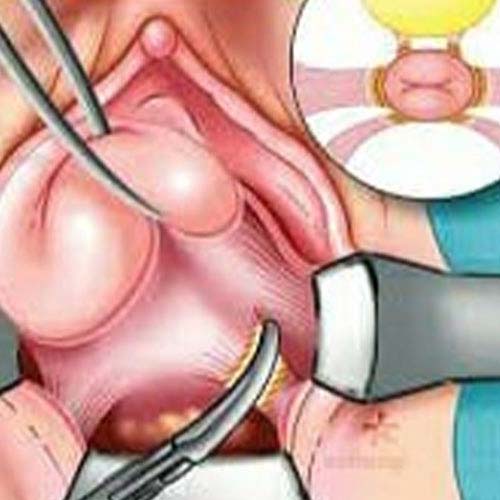Vaginal hysterectomy in Guntur
What Is Vaginal Hysterectomy?
Vaginal hysterectomy is a surgery to eliminate the uterus through the vagina.
During a vaginal hysterectomy, the specialist disconnects the uterus from the ovaries, fallopian tubes, and upper vagina, just as from the blood vessels and connective tissue that help it, before eliminating the uterus.
Vaginal hysterectomy includes a more limited time in the hospital, lower cost, and quicker recuperation than an abdominal hysterectomy, which needs a cut in your lower abdomen. In any case, contingent upon the size and shape of the uterus or the reason for the medical procedure, vaginal hysterectomy probably won't be probable. Your doctor will converse with you about other surgical choices, like an abdominal hysterectomy.
Hysterectomy regularly incorporates evacuation of the cervix just as the uterus. At the point when the specialist additionally eliminates one of the two ovaries and fallopian tubes, it's known as total hysterectomy with salpingo-oophorectomy. These organs are part of your reproductive system and are set in your pelvis.

Vaginal hysterectomy treats different gynecological issues, including:
Fibroids
Numerous hysterectomies are performed to permanently treat benign tumors in your uterus causing continuous bleeding, weakness, pelvic pain, pain during intercourse, and bladder pressure. For large fibroids, you may need a medical procedure that eliminates your uterus through a cut in your lower abdomen (abdominal hysterectomy).
Endometriosis
This happens when the tissue coating your uterus (endometrium) develops outside the uterus, including the ovaries, fallopian tubes or different organs. Most women with endometriosis have a laparoscopic or robotic hysterectomy or abdominal hysterectomy, yet some of the time a vaginal hysterectomy is possible.
Gynecological cancer
On the off chance that you have cancer of the cervix, uterus, endometrium, or ovaries, or precancerous changes, your specialist may suggest a hysterectomy. Most often, therapy for ovarian cancer includes abdominal hysterectomy, yet in some cases, vaginal hysterectomy is suitable for women with cervical or endometrial cancer.
Uterine prolapse
At the point when pelvic supporting tissues and tendons debilitate or loosen up, the uterus can sag into the vagina leading to urine spillage, pelvic pressing factor or trouble in bowel movements. Eliminating the uterus and fixing the supporting tissues may mitigate those indications.
Abnormal uterine bleeding
At the point when drug or a less invasive surgery doesn't control irregular, heavy, or extremely long periods, hysterectomy might be required.
Chronic pelvic agony
If the pain is brought about by a uterine condition, hysterectomy may help, yet only as a last option. Chronic pelvic pain can have a few causes, so an exact conclusion of the reason is critical before having a hysterectomy.
